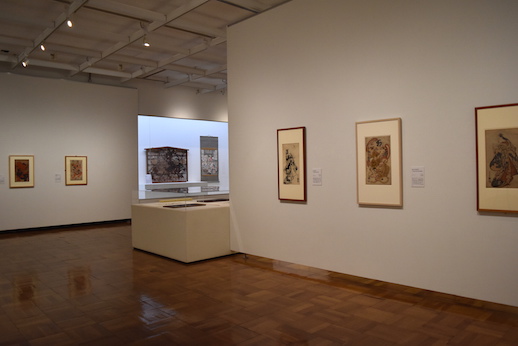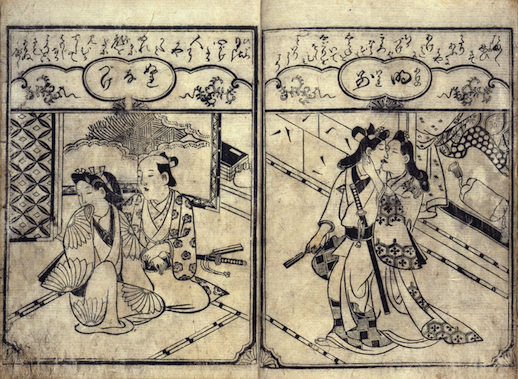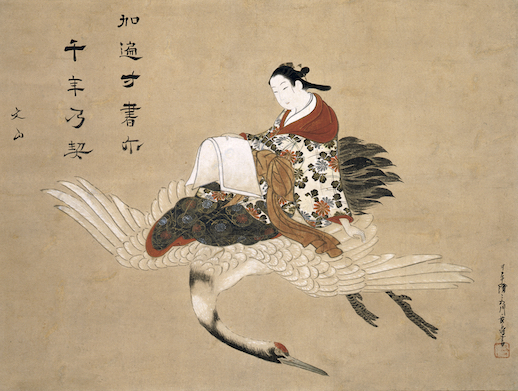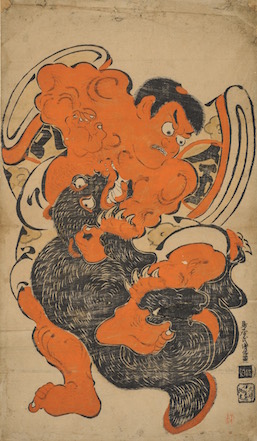Love and Hanami in Early Ukiyo-e
Ever wonder what it would be like attend a cherry blossom party in the Edo period? The Chiba City Museum of Art is showing Ukiyo-e featuring scenes of love, hanami (flowering viewing), and more through February 28th.
“Early Ukiyo-e: Power of the Woodblock, Power of the Brush” presents 17th-century Japanese artwork in celebration of the museum’s 20th anniversary. Numbering almost 200, these brush paintings and prints incorporate familiar aspects of Japanese culture such as cherry blossoms, taiko drums, lanterns, masks, cranes, dragons, kimonos, and Kabuki theater.

This is an exhibition Ukiyo-e aficionados and newbies alike can enjoy. There are English titles for the works at the front desk, and English information is listed with each piece. At its most basic level, the show offers a creative view into life during the Edo period (1603–1867), said to be an age of political stability, peace, and economic growth. The works here reflect the spirit of these times, and contain hundreds of scenes ranging from the playful to the serene, sexual, and somber. Above all, their tableaus embody the era’s sense of peace and enjoyment.

The sheer size of the gold-accented, six-panel Scenes of Pleasure Quarters in Edo from the Hosomi Museum leaves eyes lingering. While this is a larger piece, the displays vary from small books to wall hangings. Some are painted or printed onto panels or scrolls, with massively detailed depictions containing upwards of ten different mini-scenes of 20-40 people.
Then there are Ukiyo-e offering a less cluttered feel, such as the Bijinga paintings of beautiful women. These works perhaps reflect the importance of subtleness in beauty, yet no matter how uncomplicated their compositions, their detailed facial expressions and wardrobes, warm colors, and uses of gold lend them a veneer of ornamentation.
Typically dressed in kimono with pinned-up hair, many of these Bijinga beauties are portrayed standing or sitting, while others ride cranes or walk a dog. Beauty Riding a Crane by the noted artist Choki Miyagawa illuminates the imagination with its charming portrayal of movement.


The most well-represented artists in the show (those with 10 pieces or more) include Moronobu Hishikawa, Kiyonobu Torii, Kiyomasu Torii I, and Masanobu Okumura. The Chiba-born Moronobu Hishikawa produced the first sumizuri-e, the black and white India ink prints that were one of Ukiyo-e’s earliest forms. Hishikawa established himself as a highly popular printmaker in Edo, illustrating more than 150 novels and taking on disciples including Kiyonobu Torii and Masanobu Okumura.
Kiyomasu Torii I, who may or may not have been the same artist as Torii Kiyomasu II, created actor portraits including The Actors Ichikawa Danzo I and Otani Hiroji I in the Scene “Kusazuribiki” (Armor-pulling). This work, one of the highlights of the show, is reunited with its woodblock in an exceptionally rare pairing of an Ukiyo-e and the carving with which it was printed. These two pieces have not been displayed together since an exhibition for the 1964 Tokyo Olympics.
Details on more standout “Early Ukiyo-e” works:
· Scenes of the Pleasure Quarters in Edo (circa 1630-1631) by anonymous is a six-panel folding screen of ink and color on paper from the Hosomi Museum.
· The Insistent Lover (1681-1688) by Jihei Sugimura is a hand-colored woodblock print from the Art Institute of Chicago.
· Beauty Riding a Crane (Parody of Fei Zhangfang, Chinese Tang-Period Taoist Immortal) (1716-1736) by Choki Miyagawa is a hanging scroll of ink and color on paper from the Tekisuiken Memorial Foundation.
· Scenes from Asakusa (1704-1716) by anonymous is a hand scroll of ink and color on paper from the National Museum of Japanese History.
· Whispers of Love, Forty-Eight Situations (1679) by Moronobu Hishikawa is a woodblock-printed illustrated book (volume 1) from the Chiba City Museum of Art, Ravicz Collection.
· Kintaro and a Bear (1711-1716) by Torii Kiyomasu I is a hand-colored woodblock print from the Honolulu Museum of Art in Hawaii.
While art from three or four centuries ago can be difficult to relate to for the modern person, the traditions seen in these early Ukiyo-e continue to resonate with Japanese society and culture today. This exhibition demonstrates Ukiyo-e’s role as a window onto a still-present and palpable past.
Victoria Vlisides
Victoria Vlisides


